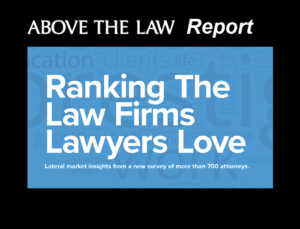U.S. District Judge Dismantles Faux Victimization Of Religion
The false narrative of religious victimization appears to dominate at the Supreme Court, yet one district court judge has struck back.

The U.S. Supreme Court (Photo by David Lat).
Right or wrong, the modern Supreme Court has transformed the analysis of the First Amendment’s religious clauses from being focused on individual free conscience liberty (as it was originally intended to be), into a single-minded inquiry of discrimination. Before we get into how this transformation has fed a false victimization narrative that is being used to attack other Americans (particularly LGBT and nonbeliever Americans), to strip them of their free conscience liberty, we need to get into some necessary background.
The modern transformation of religious liberty began with adjacent paragraphs in Everson v. Board of Education in which the Supreme Court identified two facially contradictory principles that have plagued religious liberty doctrine ever since. The first principle was meant to be a reflection of the clear original intent by the drafters of the First Amendment’s establishment clause to erect “a wall of separation between church and state” by ensuring that “[n]o tax in any amount, large or small, can be levied to support any religious activities or institutions, whatever they may be called, or whatever form they may adopt to teach or practice religion.”

Curbing Client And Talent Loss With Productivity Tech
The next principle, however, squarely contradicts the first by declaring that states “cannot exclude individual Catholics, Lutherans, Mohammedans, Baptists, Jews, Methodists, Non-believers, Presbyterians, or the members of any other faith, because of their faith, or lack of it, from receiving the benefits of public welfare legislation.”
If you are having trouble identifying why these principles are so contradictory allow me to let Douglas Laycock, arguably this country’s foremost religious liberty scholar, explain. According to Laycock, the problem with Everson’s two principles is that “each can expand to cover all the cases.” Per Laycock:
Every law providing for any form of neutrally distributed government funding can be understood as public welfare legislation. And any part of that funding that goes to a religious organization can be understood as support for religion. The Court has never acknowledged the conflict between these two principles, but it has struggled with that conflict for seventy years.
I differ from Laycock in that I see no conflict, at least not anymore. Because although it once appeared as if the 21st century Supreme Court was going to continue to uphold the centuries-old federal prohibition against government levying taxes “to support religious activities or institutions,” this new superconservative majority SCOTUS now only characterizes such prohibitions as discrimination. Unlike yesterday, today government can forcibly tax Americans under a First Amendment framework in order to fund religious monuments, church property enhancements, and religious education. Indeed, the full scale of just how much of your taxes is being levied for the express purpose of supporting religious activities and organizations is simply staggering.
Sponsored

Curbing Client And Talent Loss With Productivity Tech

Thomson Reuters' Claims Explorer: A Powerful Tool For Legal Claim Identification


Law Firm Business Development Is More Than Relationship Building

Thomson Reuters' Claims Explorer: A Powerful Tool For Legal Claim Identification

Of course, for a long-time religious apologists and members of the Supreme Court draped all of this direct funding of religion in the language and context of equality. They were just granting religious institutions equal access to public welfare funds as Everson required, you see. The problem is, in order to have a system of free conscience liberty where citizens will not be forced by government to subsidize religions they don’t believe in, the system necessarily requires treating religious organizations differently — particularly when it comes to getting government money. By classifying any differential treatment of religion as discrimination, free conscience protection against compelled support of religion has been stripped away. In other words, by transforming religious liberty into an analysis of discrimination, millions of Americans have seen their free conscience liberty destroyed.
As the conservative majority on the Supreme Court has grown, however, the pretense of equality has been thoroughly abandoned. Now, religion is being expressly favored in government pandemic-relief efforts. Federal circuits are declaring that religious activities are superior to nonreligious activities, and, therefore, deserving of greater protection than even political speech. Along with this favoritism comes the inevitably disfavored. Recently, federal courts have held that nonbelievers can be barred from addressing their own legislatures or performing private wedding ceremonies for nonbeliever couples.
Yet no amount of legal favoritism and government preference seems capable of stemming the false victimization narrative of the religious. During the pandemic, when governments began initiating lockdowns, many in the religious community cried discrimination because megachurches were being regulated differently from dissimilar activities like retail stores. It was not until Amy Coney Barrett replaced the late Justice Ruth Bader Ginsburg, however, that the discriminatory narrative finally won out at SCOTUS.
Yet not all courts are buying into this false narrative. Indeed, U.S. District Judge Jesus Bernal thoroughly dismantled it using basic logic, evidence, and reason, and I invite you all to read the full opinion because boy is it a beauty. To summarize, in California, like many other states, places of assembly such as indoor church services, movie theaters, concerts, or sporting events are being subjected to stricter restrictions on occupancy than other places like commercial retail. As Bernal explains, the reason church services are lumped into this stricter category with other types of assembly is simple and has nothing to do with targeting religion for disfavor:
Attendees at indoor worship services typically assemble close together in one space, seated in a series of many rows (or pews) that are physically close together, making close proximity of many individuals highly likely. Worship services typically last a minimum of one hour with congregants gathered in close proximity. Many services involve substantial group singing and other group vocalization by those leading the services and those in the congregation which carry with them a potential for increased risk of transmission of the novel coronavirus. (internal quotations and citations omitted)
Sponsored

Luxury, Lies, And A $10 Million Embezzlement

Ranking The Law Firms Lawyers Love
In contrast to indoor religious services or movie theaters, however, Bernal also further explains that (again internal quotations and citations omitted):
[R]etail shopping centers, hotels, laundromats, and liquor stores pose a lower risk of transmission than indoor religious gatherings. Staying at a hotel, doing laundry at a laundromat and retail shopping may bring people into relative closeness, but none of these activities would require them to remain in proximity for longer than a brief interlude. Because viral load matters, standing next to someone infected with Covid-19 for fifteen minutes is much less dangerous than standing next to someone infected with Covid-19 for one hour.
In sum, California restrictions are based on scientific understanding as to how this deadly virus is being spread. Although Bernal goes to great length to differentiate California’s restrictions from the type the Supreme Court enjoined against in New York recently, if the nondiscrimination philosophy applied in the New York case by SCOTUS were to be applied in California, Bernal will be overruled. After all, in New York, the fact that churches were being treated differently from any other type of business was all the Supreme Court needed to declare religious discrimination. And in California, indoor church services (along with movie theaters and concerts) are undeniably being treated differently.
What began as a commitment to nondiscrimination in Everson has transformed into a doctrine where religion is always deemed superior to every other social or constitutional concern, including concerns over public health during a historically deadly pandemic. And while it is refreshing to see a judge dismantle the false and destructive narrative of victimization, with the makeup of SCOTUS as it currently exists, none of it will matter in the end.
 Tyler Broker’s work has been published in the Gonzaga Law Review, the Albany Law Review, and is forthcoming in the University of Memphis Law Review. Feel free to email him or follow him on Twitter to discuss his column.
Tyler Broker’s work has been published in the Gonzaga Law Review, the Albany Law Review, and is forthcoming in the University of Memphis Law Review. Feel free to email him or follow him on Twitter to discuss his column.







